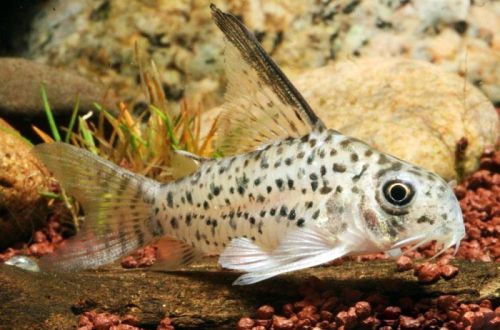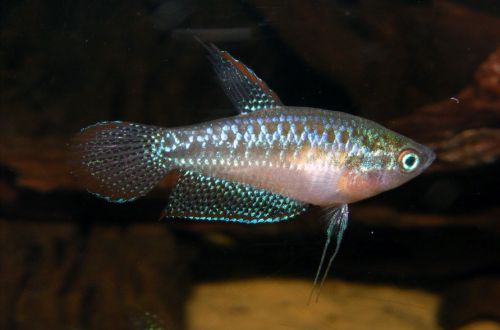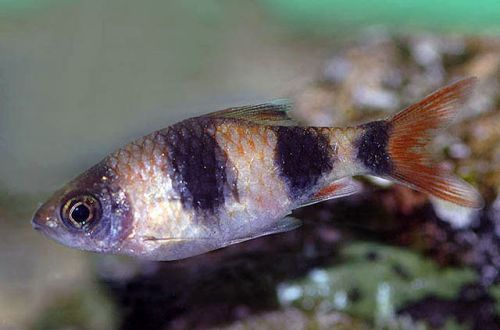
corey armored
Corydoras armatus or armored catfish Cory, the scientific name Corydoras armatus, belongs to the family Callichthyidae (Shelled or callicht catfish). The word “armatus” in the name of the species in Latin means “armor, armed, armored”, which indicates increased bone plates on the body compared to other Kori.

Comes from South America. Considered endemic to the Huallaga River basin. The natural habitat is limited to the provinces of Alto Amazonas and San Martin in Peru.
Contents
Description
Adults reach a length of about 6 cm. The color of the body is white with a pattern of black specks continuing on the tail and dorsal fin. The first rays of the fins are noticeably thickened and are sharp spikes, and the scales have turned into strong plates. All this provides the catfish with reliable protection of small predators.
Brief information:
- The volume of the aquarium – from 80 liters.
- Temperature – 22-26°C
- Value pH — 5.5–7.5
- Water hardness – soft (2-12 dGH)
- Substrate type – sand or gravel
- Lighting – moderate or bright
- Brackish water – no
- Water movement – light or moderate
- The size of the fish is about 6 cm.
- Food – any sinking food
- Temperament – peaceful
- Keeping in a group of 4-6 fish
Maintenance and care
Corydoras are among the available and easy to keep fish. Corydoras armatus is no exception and can be recommended to beginner aquarists. Unpretentious, able to adapt to various environments that mimic flowing rivers, stagnant backwaters, swamps, etc. Accordingly, the design of the aquarium is not essential. It is enough to provide soft sandy soil or a substrate of fine gravel, as well as several shelters in the form of snags, thickets of plants, etc.
Food. Since catfish spend a significant part of their lives at the bottom, it is advisable to use sinking food. They float to the surface reluctantly. They will accept both dry flakes, granules, as well as live and frozen bloodworms, brine shrimp, daphnia and other products popular in the aquarium hobby.
behavior and compatibility. They get along well with many other non-aggressive species of comparable size. They prefer to be in the company of relatives. It is recommended to purchase a group of 4-6 fish.





